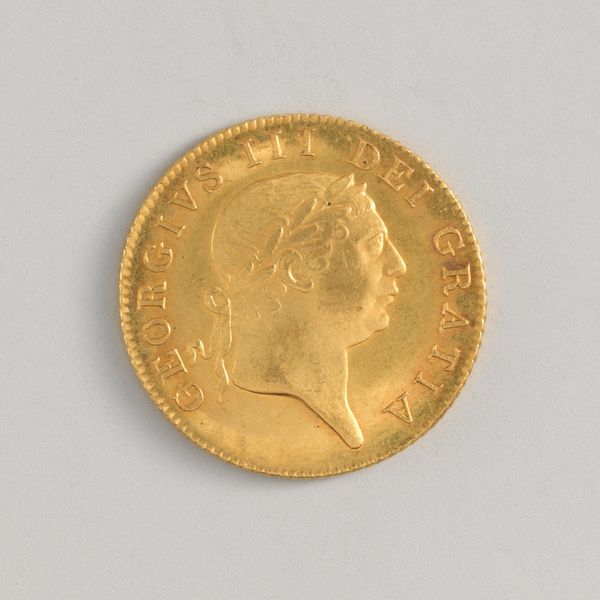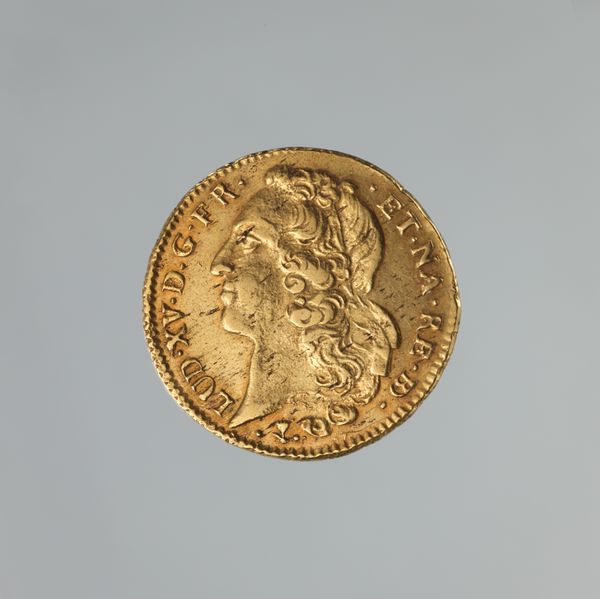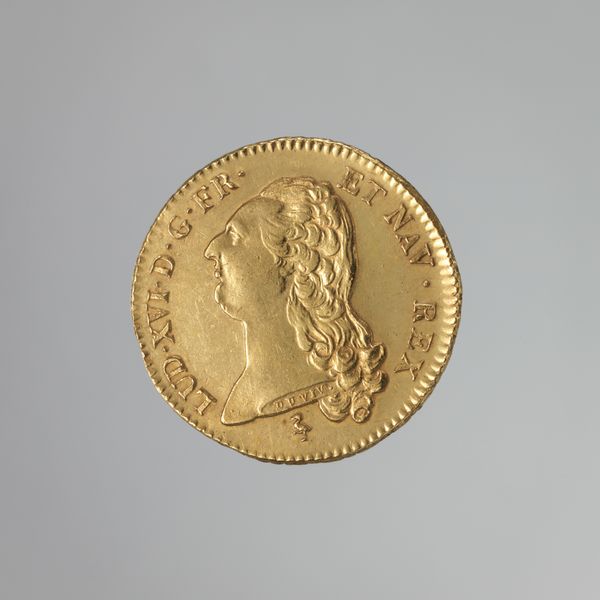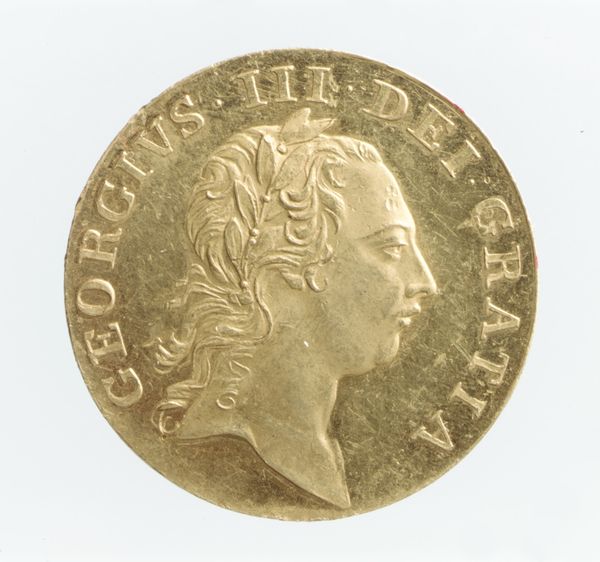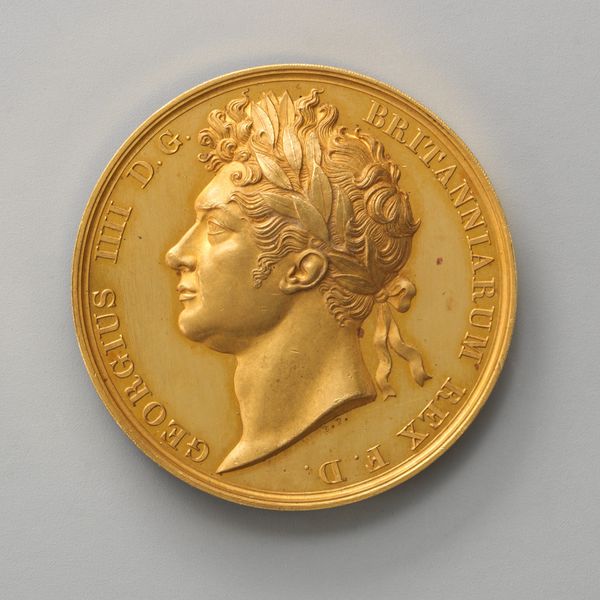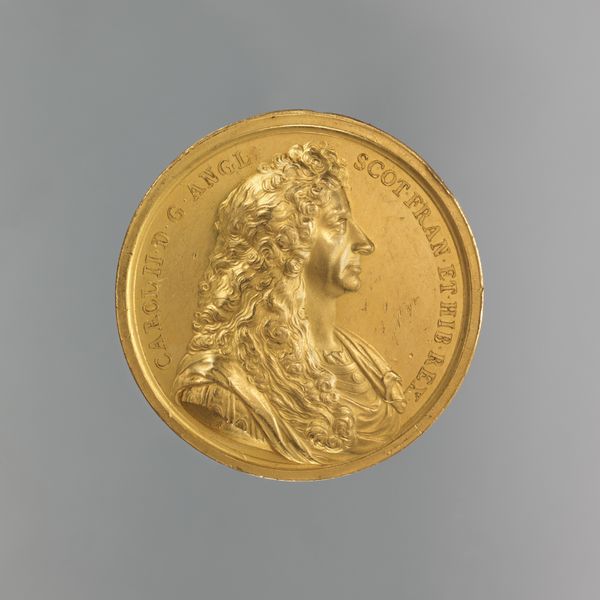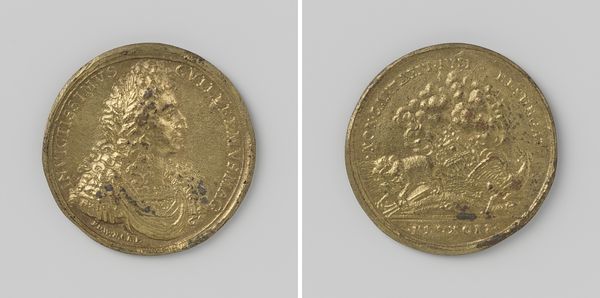
metal, gold, sculpture
#
portrait
#
medal
#
neoclacissism
#
metal
#
gold
#
sculpture
#
decorative-art
#
coin
#
profile
Dimensions: Diam.: 24 mm.
Copyright: Public Domain
Curator: Let's take a look at this gold guinea, minted in 1777 during the reign of George III. Thomas Pingo was responsible for its design. Editor: Immediately striking. Even on this small scale, you sense the immense power and privilege this coin represents. The gleam of the gold is a material expression of wealth extracted and controlled. Curator: Absolutely. The selection of gold speaks volumes. Beyond its inherent value, think about the processes of mining, refining, and minting. This wasn’t just conjured from thin air. Editor: Right, and the inscription "Dei Gratia" – by the Grace of God – reinforces that idea of divinely ordained authority. Consider the impact of displaying that specific language at that moment, the year after the American colonies declared independence! Curator: Context is key. Let’s consider the design. The coin presents a very specific, carefully constructed image of power. Editor: Precisely! We see the king in profile, rendered in this restrained Neoclassical style which lends itself to a perceived aesthetic objectivity even as it communicates ideology. Who has the ability to have their image perpetuated in this medium, to be circulated as currency, law? Curator: Indeed, a Neoclassical nod but practical too. Think about the relief - shallow enough to stack and transport easily, resistant to wear, a utilitarian choice born of technical needs. Editor: It's so much more, I'd argue. Every detail matters. From labor exploitation during that moment in time, or today's fair trade questions concerning mining for components found even now! I also question that this era was free of exploitation and slavery, even from this so-called civilized viewpoint of Western expansionism. Curator: Fascinating to think about its movement and use, to be circulating through the hands of merchants, soldiers, landowners… Editor: Exactly! It’s a potent symbol of empire. Curator: Ultimately, though, we are left examining a unique confluence of artistic technique, material culture, and economic strategy right at the precipice of monumental social change. Editor: Yes, and reflecting on how representations of power have been challenged, resisted, and re-appropriated since. These objects ask difficult, critical questions still vital in the contemporary landscape.
Comments
No comments
Be the first to comment and join the conversation on the ultimate creative platform.

